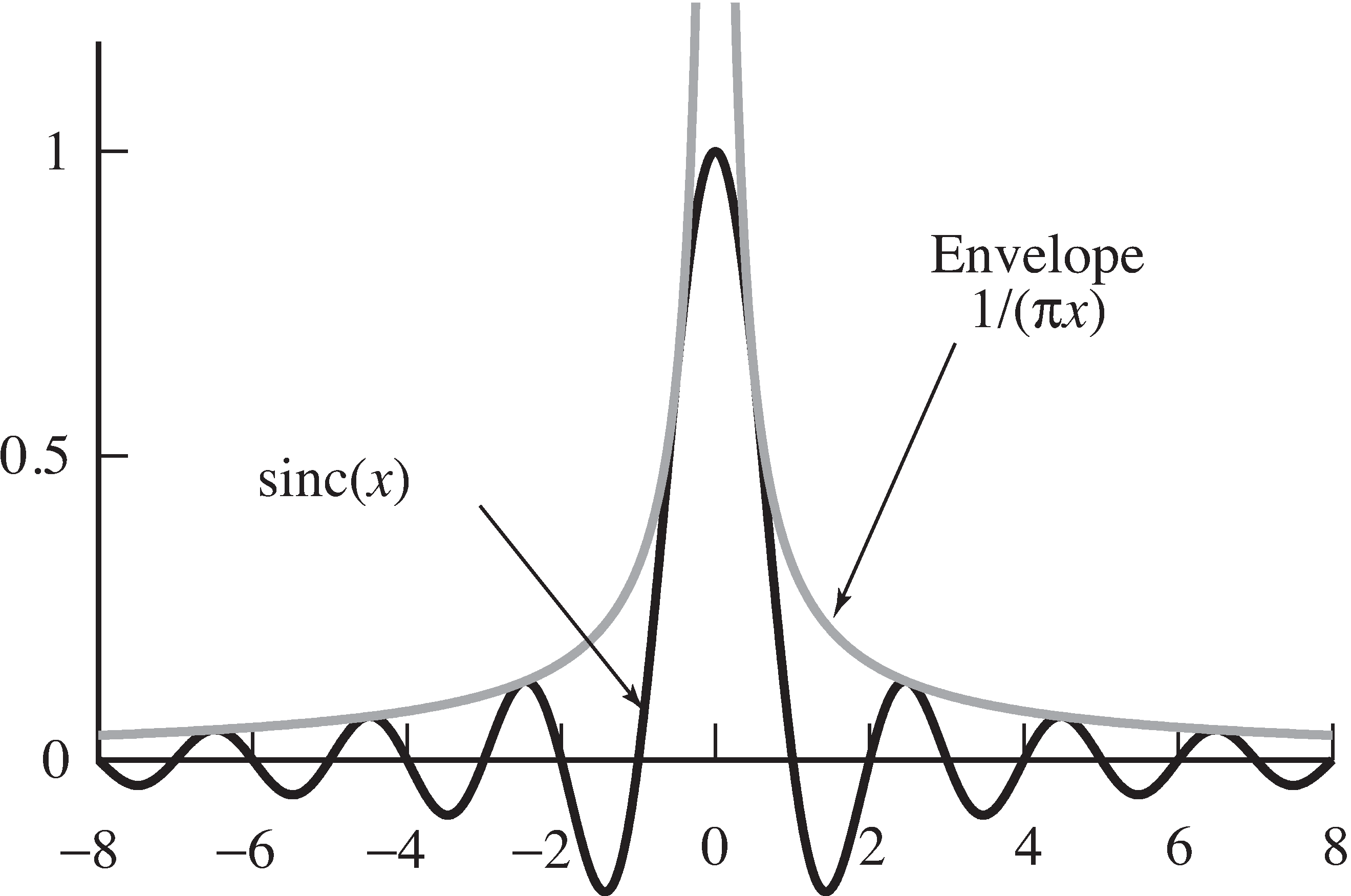| << Chapter < Page | Chapter >> Page > |
The sinc function is illustrated in [link] .
Thus, the Fourier transform of a rectangular pulse in the time domain is a sinc function in thefrequency domain. Since the sinc function dies away with an envelope of , the frequency content of the rectangular pulse shape is (in principle)infinite. It is not possible to separate messages into different nonoverlapping frequency regions as is requiredfor an FDM implementation as in [link] .
Alternatives to the rectangular pulse are essential. Consider what is really required of a pulse shape.The pulse is transmitted at time and again at time

(and again at ). The received signal is the sum of all these pulses(weighted by the message values). As long as each individual pulse is zero at allinteger multiples of , then the value sampled at those times is just the value of the original pulse(plus many additions of zero). The rectangular pulse of width seconds satisfies this criterion, as does any other pulse shape thatis exactly zero outside a window of width . But many other pulse shapes also satisfy thiscondition, without being identically zero outside a window of width .
In fact, [link] shows one such pulse shape—the sinc function itself! It is zero at allintegers In other applications, it may be desirable to have the zero crossings occur at places otherthan the integers. This can be done by suitably scaling the . (except at zero where it is one). Hence, the sinc can be used as a pulse shape. As in [link] , the shifted pulse shape is multiplied by each member of thedata sequence, and then added together. If the channel is perfect (distortionless and noise free),then the transmitted signal will arrive unchanged at the receiver. The original data can be recovered from the receivedwaveform by sampling at exactly the right times. This is one reason why timing synchronization is so important in digital systems.Sampling at the wrong times may garble the data.
To assess the usefulness of the sinc pulse shape, consider its transform. The Fourier transform of therectangular pulse shape in the time domain is the sinc function in the frequency domain. Analogously, the Fouriertransform of the sinc function in the time domain is a rectangular pulse in the frequency domain (see [link] ). Thus, the spectrum of the sinc is bandlimited,and so it is appropriate for situations requiring bandlimited messages, such as FDM. Unfortunately, the sincis not entirely practical because it is doubly infinite in time. In any real implementation, itwill need to be truncated.
The rectangular and the sinc pulse shapes give two extremes.Practical pulse shapes compromise between a small amount of out-of-band content (in frequency)and an impulse response that falls off rapidly enough to allow reasonable truncation (in the time domain).Commonly used pulse shapes such as the square-root raised cosine shape are described in detail in Chapter [link] .

Notification Switch
Would you like to follow the 'Software receiver design' conversation and receive update notifications?